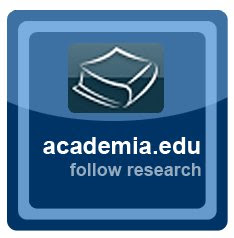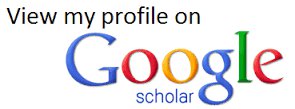2015 (First edition)
Govert Westerveld
Baba
Sy, the World Champion of 1963-1964 of 10x10 Draughts - Volume II - 204 pages
I met
Baba Sy during II Brinta Tournament in 1963/1964 where he never lacked the
little black Gaulloise cigar with a horrible pungent odour. He and his friend
and protector Abdoul dit Mansor Kouaté (1923), sales representative and member of the
Senegalese federation, participated in this tournament in the Great Masters
group. Baba Sy won first place in the group, which also involved the former world
champion (1948) and Dutch Champion (1963) Piet Roozenburg and Dutch Champion
(1962) Wim de Jong. Kouaté and Roozenburg's fourth place stood out, but
the Senegalese did not lose any game! When I saw Kouaté in Hoogezand, I had to think automatically
about a major shot made by a young player of my age in Amsterdam in 1962.
During
the championship of the North-Holland province for juniors in 1962 the player
Henk Werner of my age then (15) presented the players of this tournament a
composition with which he barely won against the famous Kouaté by a spectacular shot. I remember to
be the only one who came up with the solution.
At this time Henk Werner was one of the favorites for this tournament
and, logically, since then I was very careful with him. So much that I won
against him in this championship even after having missed a successful shot.
I
participated as Dutch youth champion (1963) in the Brinta’s Youth Group beside
Ton Sijbrands and Harm Wiersma. I even played a quick game against this legendary
player, but logically Baba Sy won against me with no problems at that time. For
all these years I have Baba Sy's autograph and Abdoul dit Mansor Kouaté's too. It's
the only thing Baba Sy knew back then - to write his signature. He was an
illiterate among educated people. He was up against people like Dr Piet
Roozenburg, engineer Geert van Dijk, the student Charles Mulder, and others.
Baba also played a quick game against Harm Wiersma when Harm was only 10 years
old. Baba Sy was a true genius and a great teacher whose innate talent was
praised by everyone.
As I lost
against the first two players in the rankings, my life radically changed and I
realized that a future as a checkers player was not possible for me. The 10
years young Harm Wiersma won against me in the first round, which meant a
revolution in the checkers world. To date my checkers career had been meteoric,
but now I suddenly had serious rivals of a very high caliber. So much so that I
predicted at that time that these two players would be world champions in a few
years, since I did not see it as a normal thing that they were able to beat me.
Logically people laughed at that and nobody believed me. My thoughts were
correct. Sijbrands was world champion in 1972 and Wiersma in 1976. From then I
focused only on my studies which I had pretty much given up for checkers. I
believe that if I had continued with the game, I would have reached the
grandmaster level, just as did Andreas Kuijken, as I was at his level. But
after this tournament, being 16 years old, I made the drastic decision that
from this date on my studies would be given priority over everything else.
At the
1963/64 Brinta tournament I played in the youth group alongside Ton Sijbrands,
Harm Wiersma, and Andreas Kuijken. In
the second round I was about to win against Switzerland’s youth champion Andres Kuijken, but
I missed the chance and the game ended as a tie. The former Dutch Champion Wim
de Jong was kind enough to tell me how I could have won against this opponent.
I also
tried to investigate whether there were more books written about Baba Sy. In
1976 Biscons, Baba Sy's discoverer, stated that there would be a short book
about Baba Sy entitled Les secrets d’un grand Maitre International showing 100 games analyzed by the
great master. However, I think that this book was never
written and that the title of this book is the same as Émile Biscons’s manuscript, which was in Ada
Dorgelo's possession. There were rumours that the Senegalese Pape Souleymane
Ndieye, aka "Le Pape" wrote a book about Baba Sy's life, but I have
not found this book so far. Shchegolev also said in a magazine that we would see Souleymane Ndieye's book in
2007. A phone call on September 8 2009 quickly clarified the matter. Very
friendly Souleymane Ndieye, once knowing that he would write a book about Baba
Sy, let me know that he would have to visit Dakar soon and expected to publish
the book this year. Requesting his help with pictures he told me that he would
rather first visit Dakar and countless other things. The answer to my email was
that due to copyright issues he would not help me with photos. Whatever it was,
I hope my initiative to write about Baba Sy gave Souleymane Ndieye the impetus
to publish his book.
On the
other hand, if we could believe what Bassirou Ba said in the eighties, there would be a chance of
getting the "Feu" (deceased) Grandmaster Baba Sy's library in order
to put it at the disposal of the Senegalese Federation of checkers.
I have
contacted several Senegalese for photography and more information. But as being
white is synonymous with being rich in any country of black Africa, one does
not want to do anything for free and buying everything would increase the
selling price a great deal. So I had to stop trying, since the money provided
yielded no fruit whatsoever. Everything changed with the collaboration of Mr.
Jean Marc Ndjofang who obtained data about Baba Sy from Mr. Ndongo Fall.
I was with Baba Sy in Hoogezand/Sappemeer (Holland) during II Brinta Tournament in late December 1963 and early January 1964. Baba Sy played then for the biggest group next to Wim de Jong who was Dutch champion in 1962 and Piet Roozenburg, former world champion in 1948, 1951, 1952, and 1955. I with my title as Dutch youth champion played in the youth group in which the two child prodigies Tonny Sijbrands and Andreas Kuijken were also found according to the newspapers. They did not speak about the child prodigy Harm Wiersma yet, but when he beat me, he was a child prodigy for me, not Andreas Kuijken.
Well, I won against Wim de Jong in 1965 and finished third in my province (behind Ton Sijbrands), where the first 2 used to be in the national championship. I considered my career as a checkers player finished because I realized that I had no future in Holland with geniuses like Ton Sijbrands and Harm Wiersma. Proofs that I was right in my decision were their titles as world champions. Whatever it was, the game at the highest level had at least taught me something that would help me a lot in my business career. I mean the ability to perform deep analysis in checkers, where all possible moves are studied and the competitive spirit inherited from it. That is the desire to always be among the best in the world.
Then in 1978 I
became part of a society as partner and worker with leading professors
(ex-rectors of the University). I felt like I was back at the checkerboard. I
had the same great performance pressure or the same strong desire for
achievement. When the partners told me that I too as a seller abroad, had to
take care of future new products of the company, it was clear. I wanted to have
the best product in the world and I managed to get it with Neohesperidin
Dihydrochalcon, a sweetener made from oranges. I was with TNO in Delft to
obtain studies in rats. Years later those responsible for the multinational
(Ferrer Group of Barcelona) that bought our company in 1989 confessed to me
that they bought it precisely for this sweetener.
A few weeks ago,
during writing of this book, a similar achievement was repeated when I heard
that the Israeli multinational Frutarome bought Nutrafur (whose previous name
was Furfural) on September 4 2015. In this firm I introduced as an external
consultant, after a long study of the international market, the product
Rosemary Extract, an antioxidant for food which brought us among the best in
the world thanks to the work of two bright chemists
and above all thanks to the game of checkers!
The reader notices with all this that I attribute my possible success to innovative products in the different companies to checkers, a mental sport which taught me how to deeply analyze and consider all possible moves. But there is more. I also know the mind that Ton Sijbrands has and the steps he had to take to be among the best in the world. I copied a lot from him in this sense for business. You should go ahead in any possible way and keep going after more than a failure - better times will come. Always believe in your potential and for success you have to think differently from others. II Brinta Tournament also opened my eyes regarding other countries. Suddenly I saw Holland as really small and wanted to master languages, since I did not understand Baba Sy and other players. My interest in other countries comes from Baba Sy and my desire was to see the world and be outside Holland.
To better
understand Baba Sy's incredible achievement it is absolutely necessary to
consider what the situation of checkers was in those years - about 14 years
before newspapers began to talk about the genius Baba Sy from Senegal. It is
then that checkers was well introduced in France, Holland, Canada, and Russia.
This necessarily implied books about the game, world championships,
international tournaments, and other ways to play the game well.
That is why the
capacity of this natural talent from Senegal is so strange and great. This man
could neither write nor read and suddenly was among the strongest players in
the world in the 1960 world championship and after winning against the 1959
world champion Iser Kuperman ranked second in the championship.
How is this
possible for a man who had never seen a book and used to play on another
checkers board in 1959 with the long diagonal at the right to suddenly be
almost the best in the world in 1960 and the best in the world in 1963? Now I
have the answer to this question, since I wrote in 2015 a work about the Sufi
mystic Ibn Sab’in (1217-1270) from Ricote Valley. Back then people did not need
books, as they had everything in their memory. They memorized the Koran and
other books. Baba Sy did not need books - he had everything in his memory and
was a very smart person. He knew at least 4 languages. A dialect spoken in his
hometown Donaya, Wolof, which is Senegal's official language, Arabic, and
French. We tend to say that a man who cannot read nor write is an illiterate,
but now we understand that no part of him was uneducated or ignorant, he simply
had no chance to go to school.
This book should be
considered a historical book, as it is the draughts career of Baba Sy. However,
those who want to go into deep analysis of Baba Sy’s games need to buy the book
of Ton Sijbrands (Baba Sy, Le Grand Livre de Baba Sy 1989).
Finally
my book also briefly describes the rise of the checkers prodigies
Harm Wiersma and Ton Sijbrands in the years when Baba Sy’s play level was at
the peak. Within a few years they would take over the world championship from
Baba Sy and others, such as Kuperman, Shchegolev, and Andreiko.
Acknowledgements
and thanks
My thanks to Mr.
Ndongo Fall of Senegal. He supplied me with interesting data about Baba Sy and
his family. In this sense I cannot forget the long correspondence I had with
Mr. Jean Marc Ndjofang and Malick Niang. My thanks to Hanco Elenbaas, Fred
Ivens, Jan de Ruiter, and many others. To Ed Holstvoogd who despite his serious
illness found the strength to send text and photos in the past. I owe a lot to
Dr. Diego Rodriguez of France since he provided me with lots of photographs of
Baba Sy’s championships in France. We talked a lot on the phone about Baba Sy
whom he met personally with Michael Hisard. I hope not to forget anyone so
THANK YOU all.






















Comprehnesive article about Draughts Game. Thanks for sharing this info
ReplyDelete